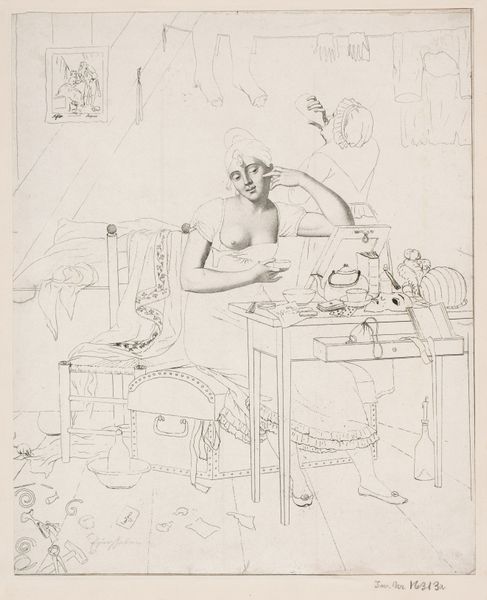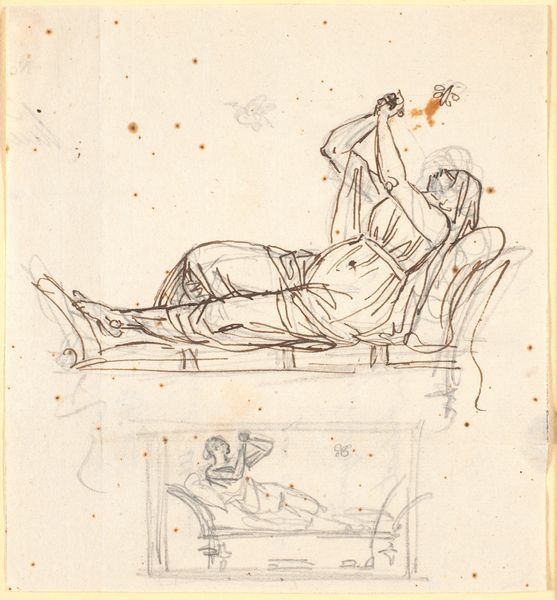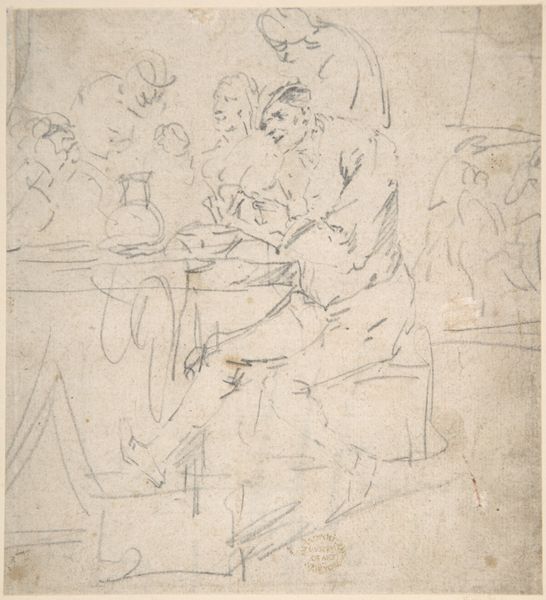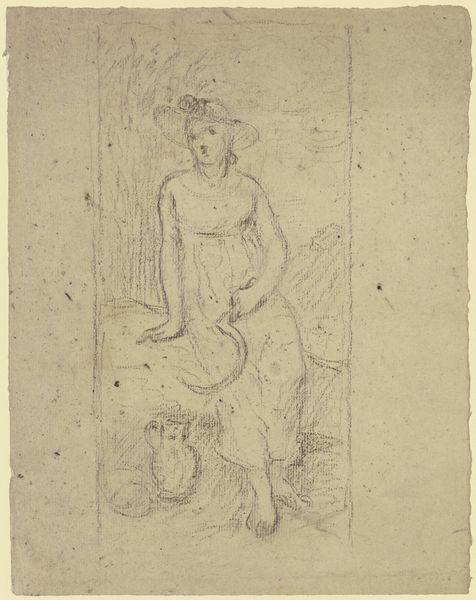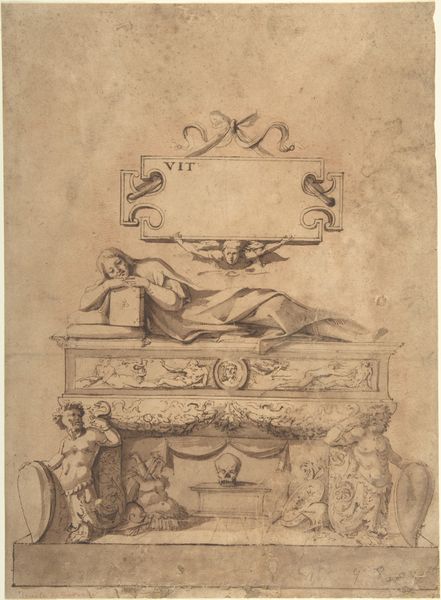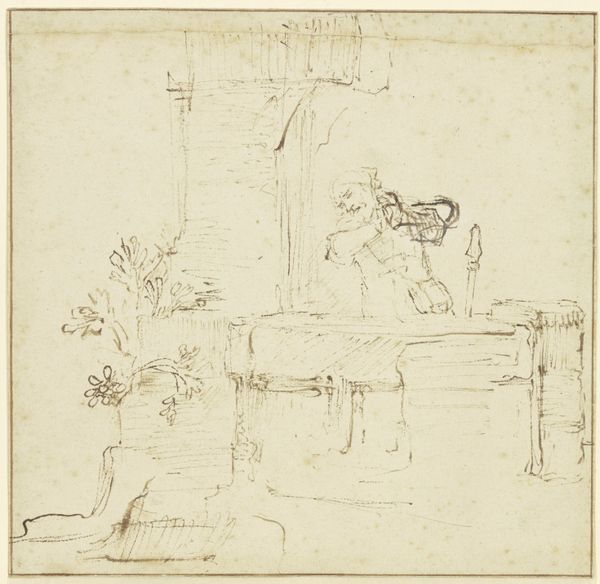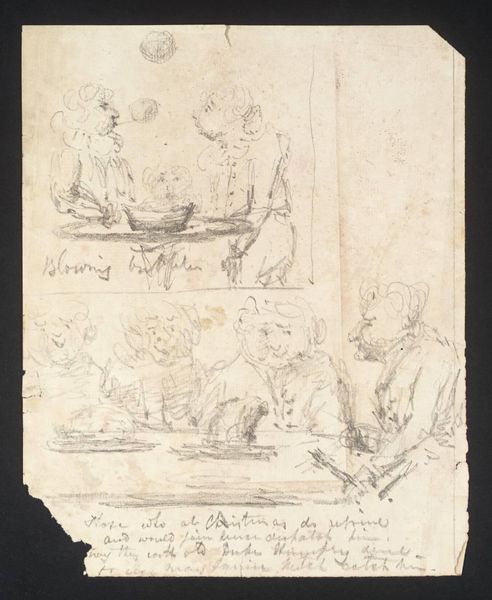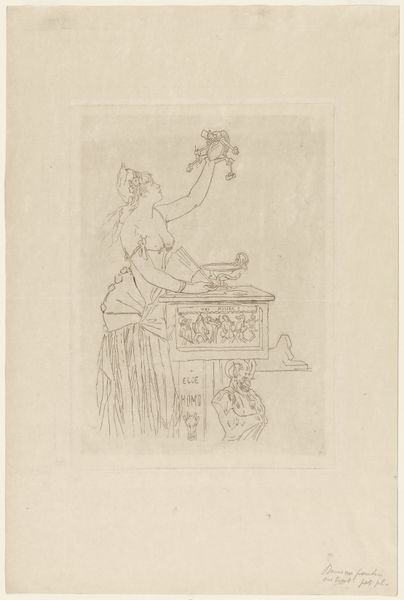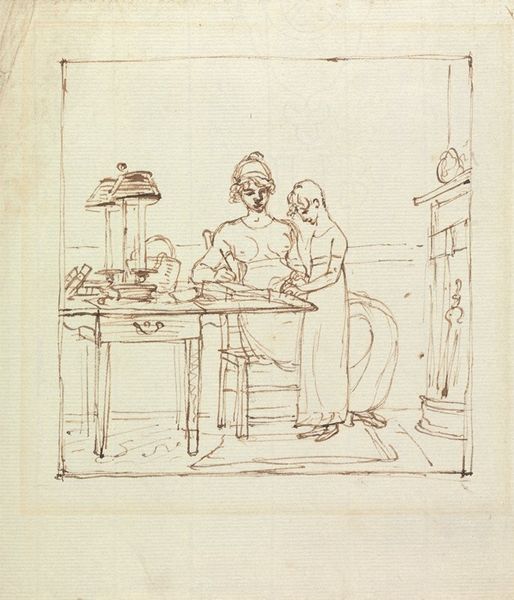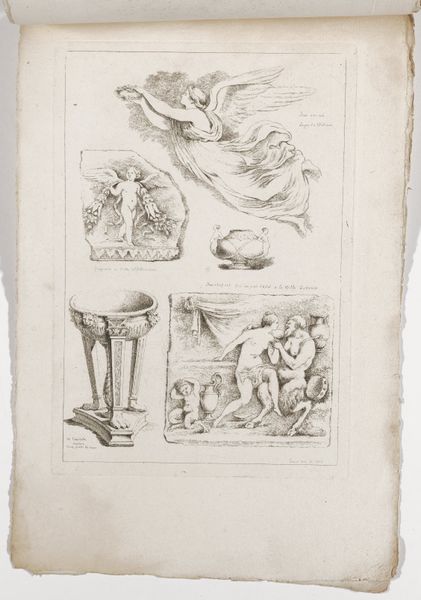
drawing, print, etching, engraving
#
portrait
#
drawing
# print
#
etching
#
etching
#
figuration
#
romanticism
#
genre-painting
#
nude
#
engraving
Dimensions: 346 mm (height) x 282 mm (width) (bladmaal)
Curator: We're looking at "En falden piges biografi. Nr. 3", which translates to "A Fallen Girl's Biography, No. 3." This print, made by Gerhard Ludvig Lahde in 1810, utilizes etching and engraving techniques. It’s part of a series, seemingly narrating a particular story, using accessible printmaking to distribute these images to a broad audience. Editor: It's… vulnerable. She's sitting there, half-dressed, surrounded by her things, and the sketchiness of the etching almost heightens that raw feeling. I mean, it’s like we're seeing a stolen moment, or even witnessing the aftermath of something. There's something poignant about the almost mundane setting – laundry hanging in the background. It’s intimate and unsettling all at once. Curator: Indeed. Lahde’s choices in material production underscore the societal context. Printmaking allows for reproduction and circulation, addressing the theme of fallen women prevalent in Romantic era artwork but using its mode of distribution, cheap prints, it talks to all social classes about something usually contained within private and moralist settings. The subject contrasts strikingly against the material base. Editor: It makes me think about the power of observation, too. Lahde chose this particular moment, in this particular setting. What did he want us to think? Is it social commentary, or something else entirely? The woman looks… weary. She almost seems aware of being observed, which is pretty powerful given the material context. And it does challenge any idealized Romantic vision with its material cheapness and mass production value. Curator: Precisely. The work’s accessible format belies the complexity of its subject matter, urging viewers to consider the plight of marginalized women without aestheticising or elevating the representation beyond recognisability of subject or distribution method. It is both commentary and challenge. Editor: Absolutely. The intimacy paired with that underlying critical edge is really what makes this stand out to me. And, wow, it’s fascinating to think of this print circulating nearly two centuries ago. A simple etching sparks this conversation… It really gets under the skin. Curator: I agree. The work continues to resonate with the viewer through its sensitive portrayal and subversive manufacturing processes, rendering historical social concerns in our immediate reality.
Comments
No comments
Be the first to comment and join the conversation on the ultimate creative platform.
